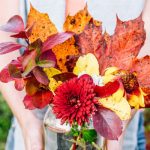
By V J Matthew/ Shutterstock
Bulb flowers, planted correctly and on time, are some of the least demanding plants in the garden. On top of that, their blossoms and leaves contribute greatly for the beauty of your home and garden. Nothing can soften the biting frost as well as the planted bulbs do, growing under the snow, ready to bloom in wonderful colours as the first spring sun rays make their way through the thick moody clouds.
You can force the bulb growth in containers at home, too, and enjoy the fragrant blossoms when winter comes to an end – an essential gardening job for the autumn.
Table of Contents
What bulbs to plant in autumn?
The typical bulbs look like an onion with concentric layers. However, depending on the plant, there could be some specifics in the appearance. Therefore, it could be often hard to identify them easily.
- Tulips, lilies and daffodils have a bulb with roots and a stalk, covered with leaves and flower buds.
- Crocuses, gladioluses and freesias have a firm vertical stalk and buds on top.
- Dahlias have tuber-like roots. Their buds are on the surface of the soil or a bit above it.
- Caladium tubers have an elongated stalk instead of roots.
- Irises and cannas have a rhizome and a thick horizontal stalk over or right under the soil surface;
- Gloxinia, anemone, buttercup and tuberous begonia have one or more buds on the top side and roots on the bottom side of the bulb. It’s often very hard to define which part is which, except when the buds fall off.
For the sake of simplicity, we will refer to all of the above as bulbs. Depending on the type of the bulb, it can either withstand temperatures below 0°C or not. The tender ones cannot bear negative winter temperatures and have to hibernate inside your house (freesias). The bulbs that can withstand lower temperatures can safely hibernate out in the open (crocuses).
Buy large and firm bulbs – avoid the flaky, defective and leafy ones – those may not be able to develop once planted. You don’t have to buy the largest ones, but still, avoid the bulbs which are too small for the given type of flower. Finally, plant the bulbs as soon as you purchase them.
Where to plant bulbs?
Lanes are perfect for planting bulbs, however, you can sow them even in a forested area among soil-covering plants. Spring bulbs, especially daffodils, feel way better among ivy and vinca major in a forest area. They will bloom there before the trees exfoliate and block the sunlight. At the same time, there will be plenty of light so that the bulb can recover for the next blooming cycle.
Most of the bulbs love plenty of sunlight or partial shade at most. If the drainage is not good enough, the bulb is in danger of rotting. Plant the bulbs around the alleys of your garden, or at opened spots, ideally, close to the south side of the walls which will protect them from the cold winds.
Many bulbs grow in January or February and the upcoming frost and snow won’t do any harm if the flowers are planted correctly. The buds are quite sensitive, but they are still barely noticeable during that time of the year.
How to plant your autumn bulbs
Plant autumn bulbs in specifically designed flower beds in soil with good drainage properties, e.g. a clay soil with sand and perlite. Keep in mind that sandy soils will require deeper planting, whereas clay-based ones can do away with shallow planting. There are two methods of sowing in the garden:
- Grouping the bulbs – Bulbs look pleasant in the garden when planted in groups, sorted by colours. Plant the large bulbs, such as tulips and daffodils in groups of 5 to 25 pcs, whereas the smaller bulbs, such as crocuses – in groups of at least 13 pcs.
- Digging the holes – Dig the whole bed until you reach the best ground level for planting the specific bulb – easier to implement when sowing outside or dig a hole for each bulb.
- Depth and distance of sowing – In general, the main rule for defining the depth of sowing is to calculate the distance between the tip of the bulb up to the surface and the size of the bulb’s diameter. With larger bulbs, the depth distance should be 2-3 times x its diameter size, and 3 to 4 times if the bulb is smaller. The distance between the bulbs should be around 1-1.5 up to 2 times the sowing depth when you have large bulbs and around 2-3 times when planting smaller ones.
- Watering – Water the soil well after planting the bulbs and once just before the winter frost. Bulbs also love frequent waterings during the blooming cycle until the leaves wither.
While flower seeds provide nutrition only until the sprouting plant finds moisture and nutrients, bulbs contain all the fibers and minerals necessary for the plant’s growth. After the plant is fully grown and blooming, the chlorophyll in the leaves, roots, and, last but not least, soil nutrients provide the bulb with recovery and prepare it for the next blooming cycle.
Removing a part or all of the leaves after blooming can significantly impede the bulb’s recovery cycle and even lead to the plant’s demise.
You can preserve the plant leaves and your garden’s beauty by tying the leaves together. Another way is to surround the deflorated bulb flowers with other types of plants to hide the withered leaves. Plant annual plants with shallow rooting systems, such as petunia, snapdragon or vervain carefully between the bulb leaves even before their blooming cycle.
The annual plants will grow slowly and won’t interfere with the beauty of the bulbs, and, after the latter fade, the annuals will hide them with their pretty flowers.
Planting bulbs in pots
Bulbs, especially the ones that bloom during summer, look very well in decorative pots and crates. Having openings for draining the excess water on the bottom is a must. Don’t use metal containers and never let the soil dry out.
Bear in mind that, in containers, soil loses moisture much faster and you will have to water the bulbs there more frequently than in a garden. A very good soil mixture for containers is even parts of garden soil, well-rotted manure and perlit.
Caring for the bulbs after planting
Never trim the stalks with buds as you do with the annuals. Also, make sure to retain the leaves while still green – wait for them to fall by themselves, don’t cut them on purpose.
One of the good things you can do for the bulbs you plant outside is to place leaves, hay or another type of light-weight material over them. A layer of around 5 cm in width will keep the soil from constant frosting and defrosting during the winter. The hay will also prevent weeds from growing, as well as keep the soil moisture relatively constant.
Remove the hay/leaf layer when spring comes in order to allow for the sun rays to warm up the soil and activate the stalk growth.
Feeding the bulbs
Any plant does well in humus-rich soil, which contains enough moisture but doesn’t get damp. In the beginning, the bulbs have enough nutrient storage, but it’s a great idea to add some well-decayed manure on the bottom of the flower bed.
Normally, you need to fertilise the soil once in the beginning of spring and one more time when the first blossoms appear, not counting the manure you put in the base at the beginning. With poor soils, it’s good to add another layer of fertiliser after the last one.
On the market, there are fertilisers with which, after the first leaves appear above the ground, you can fertilise weekly, following the instructions on the package.
Pests & diseases
If you find rotten or mould-covered bulbs, cut the infected part and treat with fungicide or spray with a weak bleach solution – 1 tbsp of bleach with 4 litres of water. Problems on the leaves and flowers, due to pests, treat with insecticides the same way you treat other plants.
Bulb propagation
- The most popular method here is by resetting and dipping tillers and seeds. You have to dig and split the bulbs.
- Dig out the bulbs after the leaves wither and fall. Do it carefully – you don’t want to scratch the bulbs.
- Reset the bulbs by using fungicide on the spots you split them. Plant the bulbs back.
- The smaller bulbs will take between a year and three to bloom. It’s a good idea to plant smaller bulbs in separate containers or segregated areas in the garden, to keep consistency.
Bulb forcing
Some bulb types are incredibly easy to force. Crocuses, for example, will bloom on the window sill, without the presence of water, soil or container. The only thing they need is light.
With most bulbs, forcing goes in three phases. The soil substrate must have very good drainage capabilities. The bulbs should be placed very close to each other and at around 1 cm of depth. That’s how all the bulbs will bloom at the same time.
- Phase 1: Winter. Bulbs need 8 to 15 weeks at a dark and cold place with temperatures between 0 and 10°C. You can store the bulbs in a fridge, basement, garage or even outside, but make sure they are protected from frost. After that, you can start to gradually move the containers to a warmer place. This way you will provide more time with blooming forced bulbs.
- Phase 2: Transferring the bulbs to a warmer place. Move the containers in a cool and lit area at around 10-15°C.
- Phase 3: Blooming time. Move the bulbs to a sunny and warm place – with around 15 to 20°C. If the plants grow too high, prop them up.
Most often, the forced bulbs do not bloom on the next year and need to take a break. The most widespread spring-blooming bulbs are crocuses, daffodils, tulips and hyacinths.
Need a hand with the bulb planting?
Enter your postcode to view our rates and availability in your area.
For questions about the services we offer visit our main site



